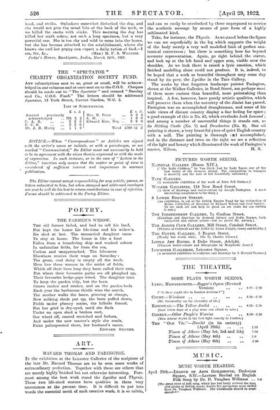ART.
HAVARD THOMAS AND FARINGTON.
Its the exhibition at the Leicester Galleries of the sculpture of the late Mr. Havard Thomas are to be seen some works of extraordinary perfection. Together with these are others that are merely highly 'finished but not otherwise interesting. Fore- most among the best work stand the Lycidas and. Thyrsis. These two life-sized statues have qualities in. them very uncommon at the present time, It is difficult to put into words the essential merit of such creative work. it is so subtle, and can so easily be overlooked by those unprepared to receive the aesthetic message by means of pure form- of a highly sublimated kind.
Take, for instance, the Thyrsis. As we stand before thefigure we can see superficially in the leg which supports the weight of the body merely a very well modelled limb of perfect ana- tomical correctness ; but there is something here far beyond accurate representation. Again, go right behind. the statue, and look up at the left hand and upper arm, visible over the shoulder. As we look there is raised a lyric emotion, which finished modelling alone could not' produce. It is, indeed, to be hoped that a work so beautiful throughout may some day stand by its peer; the Lycidas in the Tate Gallery.
The works by that forgotten landscape painter Farington, shown at the Walker Galleries, in Bond Street, era perhaps most of them more curious than beautiful, more painstaking than inspired. A few, however, have purely artistic qualities, which witl preserve them when the notoriety of the diarist has passed, Farington was an accomplished draughtsman, and some of his wide views of distant country display a fine feeling for space ; a good example of this is No. 43, which overlooks Loch Lomond ; and among a number of uneventful things it stands out, as do Stirling Castle (No. 7) and Dumbarton (No. 8). One oil painting is shown, a Very beautiful piece of quiet English country with a mill. The painting is thorough end accomplished, and in the distance and trees on the right we see a reflection of the light and beauty which illuminated the work of Farington's


































 Previous page
Previous page